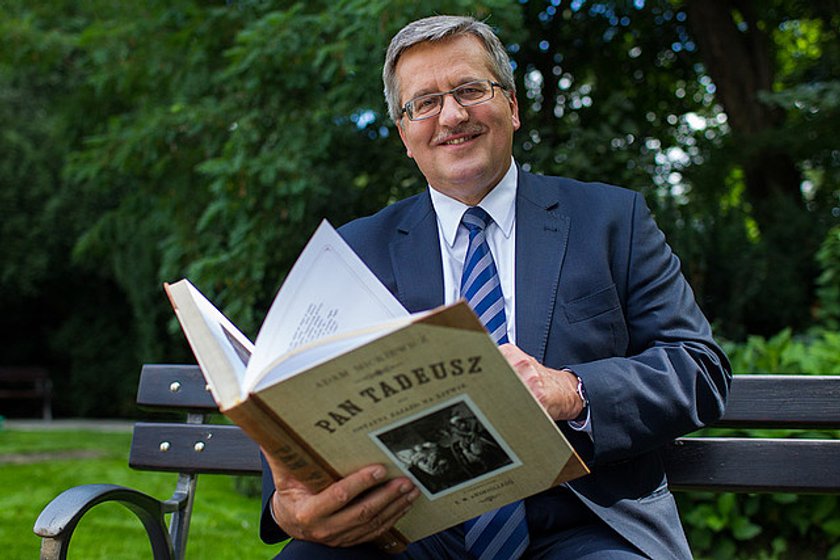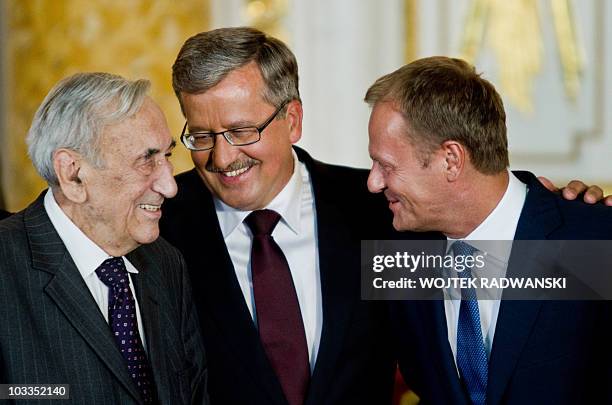Let's explore two significant figures in Polish history: Tadeusz "Bór" Komorowski and Bronisław Komorowski. It's crucial to understand the distinct roles and time periods they represent. This article aims to provide educators with the tools to differentiate between these two individuals and engage students in learning about Polish history. We will cover key aspects of their lives and legacies.
Tadeusz "Bór" Komorowski
Tadeusz "Bór" Komorowski (1895-1966) was a prominent military leader. He is best known for commanding the Armia Krajowa (Home Army) during World War II. His leadership during the Warsaw Uprising cemented his place in Polish history, making him a symbol of resistance against Nazi occupation. His story embodies courage and sacrifice.
Before the war, Tadeusz Komorowski was a decorated equestrian. This background instilled discipline and leadership qualities. During the German occupation, he rose through the ranks of the resistance movement. He adopted the pseudonym "Bór," which became synonymous with his name. This underground activity was critical in planning and executing acts of sabotage and armed resistance.
The Warsaw Uprising in 1944 was a pivotal moment. As commander of the Armia Krajowa, Komorowski led the fight against the German forces in Warsaw. Although ultimately unsuccessful, the uprising demonstrated the Polish people's unwavering determination to liberate their country. The uprising was devastating, resulting in immense loss of life and the destruction of Warsaw.
After the suppression of the uprising, Komorowski was taken as a prisoner of war. He spent the remainder of the war in German POW camps. Following the war, he lived in exile in London, where he remained active in Polish émigré circles. He continued to advocate for a free and independent Poland. He never returned to Poland under the communist regime.
Teaching Tips: Tadeusz "Bór" Komorowski
Begin by emphasizing the context of World War II and the German occupation of Poland. Use maps to illustrate the extent of the occupation and the location of Warsaw. Explain the role of the Armia Krajowa as the main resistance force. The importance of the resistance can be highlighted by illustrating examples of their sabotage and clandestine operations.
Focus on the Warsaw Uprising, explaining its aims and the reasons for its ultimate failure. Show photographs and videos (if age-appropriate) to convey the scale of the devastation. Discuss the ethical dilemmas faced by Komorowski and other resistance leaders. This can prompt critical thinking and debate among students.
Consider assigning students to research different aspects of the uprising. They can explore the experiences of civilians, the role of women in the resistance, or the international response to the uprising. Encourage students to create presentations or write essays based on their research. This active learning approach can enhance their understanding and engagement.
Bronisław Komorowski
Bronisław Komorowski (born 1952) is a contemporary Polish politician. He served as the President of Poland from 2010 to 2015. His presidency was marked by a focus on national security and international relations. He represents a more recent chapter in Polish history.
Before becoming president, Bronisław Komorowski was involved in anti-communist activities during the communist era. He was a member of the Solidarity movement and participated in underground publishing. This early involvement in politics shaped his later career.
After the fall of communism, Komorowski held various positions in the Polish government. He served as Minister of Defence and Speaker of the Sejm (the lower house of the Polish parliament). These roles provided him with extensive experience in both domestic and foreign policy. He gained a reputation as a pragmatic and moderate politician.
As President, Komorowski focused on strengthening Poland's ties with its allies, particularly within the European Union and NATO. He also emphasized the importance of national unity and reconciliation. His presidency was characterized by stability and continuity.
Teaching Tips: Bronisław Komorowski
Begin by introducing the context of post-communist Poland. Explain the transition from communism to democracy. Discuss the challenges and opportunities that Poland faced during this period. Understanding this context is essential for appreciating Bronisław Komorowski's role in Polish politics.
Focus on Komorowski's involvement in the Solidarity movement and his role in the anti-communist opposition. Explain the significance of Solidarity in bringing about the collapse of communism in Poland. Discuss the sacrifices made by individuals like Komorowski in the fight for freedom and democracy. This provides insight to his future decisions.
Discuss Komorowski's presidency, highlighting his key policies and achievements. Analyze his approach to international relations and his efforts to strengthen Poland's position in the world. Encourage students to debate the merits and drawbacks of his policies. This can promote critical thinking and encourage them to form their own informed opinions.
Common Misconceptions
A common misconception is confusing Tadeusz "Bór" Komorowski and Bronisław Komorowski as the same person or as directly related. Emphasize that they are two distinct individuals separated by time and circumstances. Their connection is mainly through their shared surname and Polish heritage. Clarify this point early in the lesson to avoid confusion.
Another misconception is minimizing the significance of the Warsaw Uprising. Ensure students understand the uprising's importance as a symbol of Polish resistance. The impact of the uprising cannot be overstated due to the human cost it bore. The resilience and courage of the Polish people is exemplified by the Warsaw Uprising.
Finally, some students may not fully grasp the complexities of post-communist Poland. Provide adequate background information on the political and economic changes that occurred during this period. Explain the challenges faced by Poland in transitioning to a market economy and a democratic system. This understanding is crucial for appreciating the context in which Bronisław Komorowski operated.
Engaging Activities
Create a timeline highlighting key events in the lives of both Tadeusz "Bór" Komorowski and Bronisław Komorowski. This visual aid will help students understand the chronological order of events and the historical context in which they occurred. Timelines are a helpful reference for students.
Organize a debate where students argue the merits and drawbacks of the Warsaw Uprising. This will encourage them to think critically about the ethical dilemmas faced by Tadeusz "Bór" Komorowski and other resistance leaders. Debates foster critical thinking and communication skills.
Assign students to research and present on different aspects of post-communist Poland. They can explore topics such as the Solidarity movement, the transition to a market economy, or Poland's role in the European Union. Student led research is engaging and interactive.
Use primary source materials, such as photographs, letters, and speeches, to bring the stories of Tadeusz "Bór" Komorowski and Bronisław Komorowski to life. These materials can provide students with a more personal and engaging connection to history. Primary sources add authenticity to the learning experience.
By implementing these teaching strategies and addressing common misconceptions, educators can effectively teach students about Tadeusz "Bór" Komorowski and Bronisław Komorowski. This will not only enhance their understanding of Polish history but also promote critical thinking and engagement.

